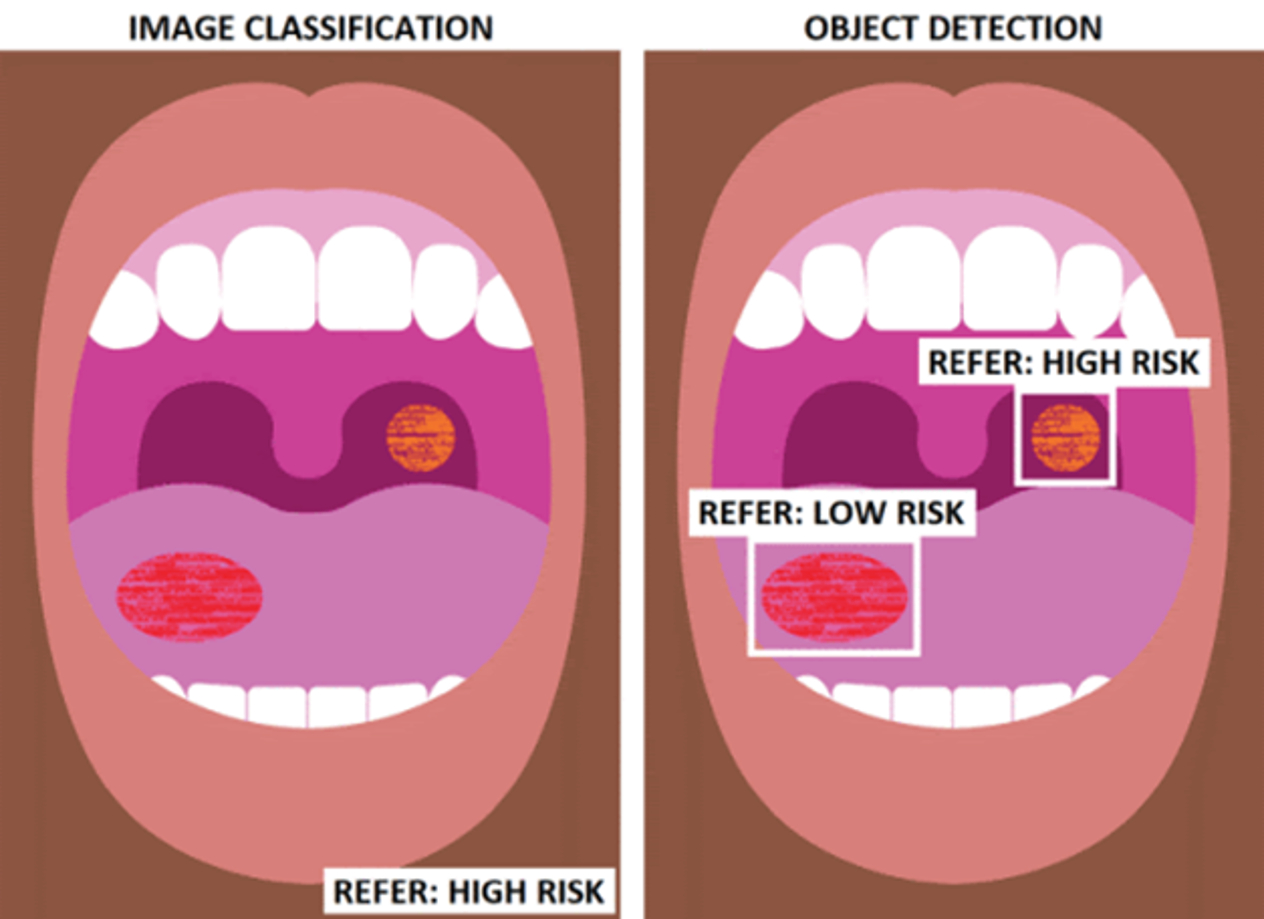Computer vision and AI have made their way into dentistry in a variety of fields -radiography, intraoral scans, and facial scans, to name a few.
The technology is already being used for:
- Automated interpretation of dental images (radiographs, CBCT, and MRI scans)
- Treatment recommendations
- Future dental disease predictions
Thanks to artificial intelligence, dental practitioners are able to make sense of the data more quickly and efficiently.
In fact
Machine learning algorithms have already overtaken dentists in terms of accuracy. V7 works with a number of AI teams labeling their data and training AI models for diagnosing tooth decay and predicting whether a tooth should be extracted, retained, or undergo a restorative treatment. Now, let’s have a quick look at how AI can enhance modern dentistry.
Tooth decay
With the help of convolutional neural networks (CNNs) it’s possible to train AI models that can detect tooth decay at an early stage. Thanks to such computer vision techniques as object detection and semantic segmentation the diagnoses are quick and accurate and help dentists start treatment before cavities grow too large.
Why does this matter? One study found that the participating doctors only agreed on the presence of decay in about 4% of the cases they were presented with. Well, seems like consulting AI for an additional opinion would be more than welcome.
Cancer detection
AI is being developed as a technology that can help in oral cancer detection. While AI technology has not yet reached a point where it can fully automate the detection of oral cancer, studies have shown promising results. In particular, image classification and object detection using deep learning-based approaches have yielded accuracy rates of 87% and 78%, respectively.
In addition, a study that used a transfer learning approach showed that it yielded 10-15% absolute improvement when compared with a simple Convolutional Neural Network (CNN) baseline.
Now, all these results apply to detecting cancer in its early stages, which is vital as the survival rate reaches about 83% when cancer is detected early enough. Sadly, only about 29% of cases are diagnosed at an early stage.

Endodontics
AI can also be used in endodontics, specifically to detect periapical lesions and to determine the working length of a tooth. So far, AI solutions have been tested and used for:
- Examining, measuring, and evaluating the condition of the tooth down in the gums (ie. the root) on the basis of radiographic images
- Detecting, locating, and classifying different aspects of tooth root anatomy and possible pathologies
- Determining the length of the root in the gum (working length) is also critical to endodontic treatment
The results are very promising as the AI models had an astonishing 90%+ reliability in these tasks. In fact, the artificial neural networks (ANNs) used for locating the apical foramen (to determine the working length of a tooth) achieved 93% accuracy.
To conclude
AI has already made its way into dentistry. Various machine learning techniques, in particular, convolutional neural networks and deep learning, provide accurate and automated solutions for tasks such as early detection of tooth decay, detection of periapical lesions, and determination of the working length of a tooth.
All this suggests that the future of dentistry is very promising and AI will play a big role in it.
